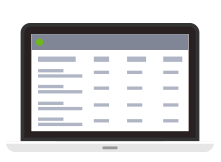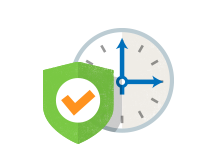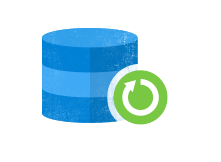Peace of mind is at the heart of everything we do. Learn about the ways FidSafe® secures the documents you store with us.
Explore securityWhen you log in to FidSafe®
We make it easy to access your FidSafe when you need it, but take important steps to verify your identity first.

Two-factor authentication
When you access your account, we ask you to provide more than just a username and password. This can be a unique code sent to your
US-based mobile device, or one or more personal security questions that you know the answer to.

Password requirements
To make your password harder for a stranger to guess, we have strict minimum strength requirements.

Login protection
Accounts that exhibit too many unsuccessful or incorrect login attempts are automatically blocked until issues are resolved.

Activity logs
There's a log of all your account activity in your account settings, so you can keep tabs on it and contact us if anything looks out of the ordinary.
When you upload copies of your documents
We protect them with procedures and electronic security measures similar to some of the world's biggest banks and financial institutions.

End to end encryption
From the second you send data from your computer to our servers, while it's stored, and when it's accessed within FidSafe, it's encrypted using 256-bit AES encryption.
- One of the highest levels of encryption, 256-bit AES is approved by the NSA and US Department of Commerce.
- The encryption keys that unscramble your data are generated, stored, and protected by FidSafe.

24/7 on-site security
Data centers are protected by round the clock security with strict access requirements, secured sensitive areas, and ID requirements.

Disaster prevention and recovery
Encrypted data is backed up on multiple servers in multiple data centers, so there's no protection interruptions or data loss in the event of fire or power outages.
When you trust us with your personal data
Your privacy isn’t something we take lightly. Instead, we take meaningful steps to protect and respect it.

Restricted access to your files
FidSafe employees cannot see or access what you upload, except when legally obligated, and only then to satisfy that legal obligation.

Secure sharing
When you share a document using FidSafe, your Contact must have a FidSafe account and go through the same authentication process to view it.

Your right to privacy
We don’t (and won’t) sell or use the limited personal data you provide to serve up targeted online ads.
Want more details? View our Security Policy and Privacy Policy.